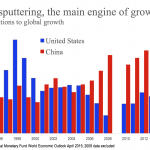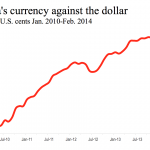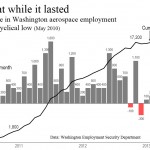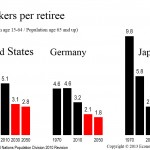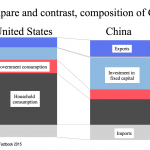
One of the main problems with China’s economy is that it is geared too heavily to exports and infrastructure spending, too little to domestic consumption. You can see the contrast with the U.S. in the chart. American consumers are in the driver’s seat in the U.S. Household consumption in 2014 [continue reading . . . ]
